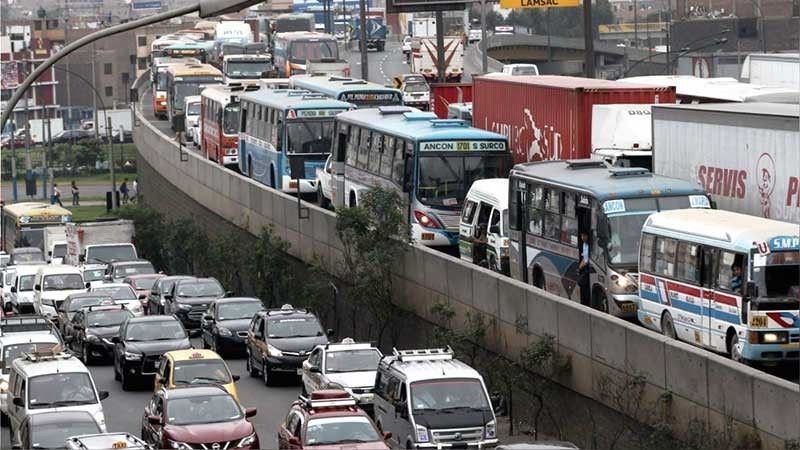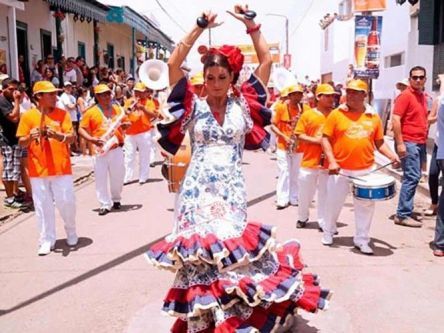Public transportation in Lima except for the Metropolitano and Tren Electrico comprises a chaotic system of privately owned and operated big buses, medium-sized micros (coasters or microbuses) and combis (small vans). For most Limeños the only affordable option, this means of transportation is the cheapest and most adventurous way of getting around Lima for visitors.
Content Overview
While Lima's complex bus network connects literally all the city's principal streets, the full routes of individual buses and connections stay even for some locals a mystery. Don't expect new, well maintain vehicles, a nice bus stops or even a centralized terminal for all busses, not to speak of the luxury of a printed itinerary, timetable or a ticket booth. Instead no organization, at least from the North American and European point of view, no information awaits you. Anyhow riding around town in a micro conveys a completely new impression of Lima.
Buses in Lima
The locals are very helpful, but for getting around Lima on a bus you should have at least a slight idea about some major roads in town and where you want to go. Each bus has a sign above the windscreen showing the starting point and the ultimate stop of its route; for example Ate – SJM (San Juan de Miraflores) or SJL (San Juan de Lurigancho) – Surco and somewhere on the front also a number showing the route, for example EM 04 or OM 30. On the side of the bus you find a list of a few major roads along the way, like Benavides, Arequipa, Javier Prado.
For some years now buses aren't allowed to drive through Lima's historic city center. So if you want to go there you have to take a micro either to Av. Tacna to the west or Av. Abancay to the east of the center and walk the last few blocks.
Bus stops?
Normally buses and micros can be waved down at any point of the main road, but best you wait for the right one at a junction or traffic light or just have a look where lots of people are waiting, that's the right point. In some upper scale districts like Miraflores, here especially at Av. Larco, or San Isidro, authorities are trying hard to convince drivers only to stop at bus stops ("paraderos"). When a bus stops, the driver's assistant shouts out names of upcoming roads to potential customers. Hop on quickly and watch out because as soon everybody is on board the driver will race off to find and snatch more passengers from under the competition's nose. Make yourself comfortable and enjoy the "show". It's not uncommon that vendors will hop onto the bus selling, after telling a heart-breaking story, candies or other stuff or in case the radio isn't turned on full volume musicians entertain the passengers for a small tip.
Bus fares
Fares are fairly cheap: a short ride of a few blocks within a district will set you back with S/. 0.50, a ride from Miraflores to the City Center costs S/. 1.00 and from starting point to the final stop between S/. 2.00 and S/. 3.00. At one point of your journey, the driver's assistant makes a round through the bus and collects the fare. Have change in your pockets! Also insist on getting the little ticket (this is not only your receipt but also in case of an accident the insurance cover!).
Shortly before you reach your destination, shout "baja" (getting off) or "baja esquina" (getting off at the next corner). When the bus stops, get off quickly as the driver will race off immediately again.
Getting around town in micros can be very time consuming. Drivers literally stop for every single passenger at any point along the route and even go slower when the bus isn't full enough hoping to find more passengers. So if you are in a hurry, better take a cab. The same applies if you have luggage. In some vehicles there is barely enough space for the passengers, so it sometimes can be difficult to fit a suitcase or backpack somewhere. But in case they allow you on the bus with a bigger piece of baggage, expect to be charged an additional fee.
Enjoy the ride...
Riding on a bus in Lima isn't for everyone. Besides the difficulties finding the right route, most vehicles are quite old, badly maintained and run down. Drivers often race like mad, competing with one another on similar routes. It seems traffic rules don't exist for them. Additionally buses, micros and combis are especially during rush hours utterly overcrowded.
But there is light at the end of the public transport tunnel in Lima...
Metropolitano – Lima's new Public Transport System & Concept
The Metropolitano is a new public transport system in Lima that was inaugurated in 2010. New gas powered articulated buses circulate on special bus lanes that are partitioned off the normal road, finally giving Lima a mass transit system comparable with the Bus Rapid Transit. The first route connects Chorrillos in the south via Barranco, Miraflores, San Isidro and Lince with the City Center and further with Independencia and Comas in the north.
Along the route you find modern platform style bus stops and buses will only stop there. Here you can purchase a card at a dispensing machine worth S/. 5. At the same machine your "tarjeta" can be recharged. To pay your fare, just hold the card in front of the electronic reader and they will deduct the amount from your credit. Fares are between S/. 0.80 and S/. 1.50. Buses are supposed to run daily from 06.00 am to 09.50 pm and arrive at the bus stops about every 5 to 10 minutes.
Tren Electrico – Urban Train – Metro Lima
While other major cities in Latin America operate more or less impressive subways or other public mass transportation systems, Lima with its chaotic privately owned "bus system" stood apart for many years. But since 2012, Peru's capital finally has an eagerly awaited Metro. Until now it's only one line (ok only half a route with 16 stations, the other half is still under construction).




























